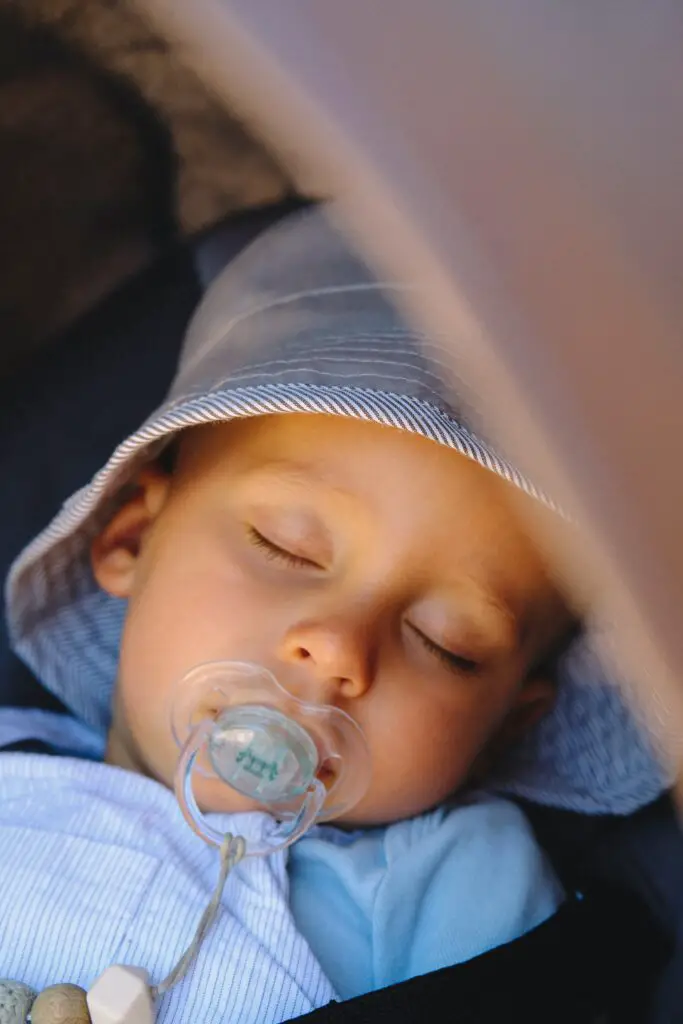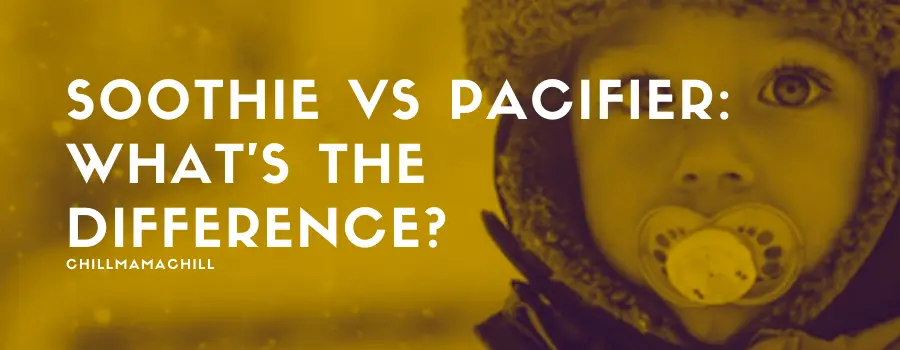For any would-be parents, caring for a newborn baby may seem easy at first. After all, don’t they all just feed, poop, cry and sleep? But it’s the crying part that can be frustrating and may make you go crazy. Thankfully, there’s an invention called pacifiers or soothies, an effective solution for soothing or calming a restless baby.
A pacifier could be a parent’s last resort if breastfeeding and diaper change proves futile. However, while these two devices serve the same purpose, there’s a slight difference between the two. So, what’s the difference between a soothie and a pacifier?
The significant difference between a pacifier and a soothie is in the design and, of course, the brand name. This article will help you understand the difference between these two essential devices and offer the best solution.
What’s the Difference Between A Pacifier And Soothie
Technically, a soothie and a pacifier are the same. A soothie is a product of Philip Avent and is, therefore, a brand name of their product. It is best known as a single-piece design silicone pacifier, while other pacifiers are generally composed of various parts and materials.

Both the soothie and pacifier serve the same purpose of soothing your baby. However, one product may perform better than the other, depending on your baby’s preferences. Let’s look at the difference between a pacifier and a soothie.
Understanding Pacifiers
A pacifier known as a binky or dummy is a popular baby accessory.
It’s a small object with a nipple-like bulb that is put in the baby’s mouth. It also features a large ring to prevent the child from swallowing the object. Babies naturally have a primitive sucking reflex which is provided by a pacifier as a self-soothing solution.
Pacifiers can be made of different materials, including latex, rubber, silicone, and plastic. It typically contains three distinct parts, which are the nipple, the shield, and the ring or handle. Ideally, pacifiers also come in various colors, shapes, and sizes.

The ideal age for introducing a pacifier to your baby should be four weeks, and they shouldn’t use it past their second birthday. After age two, continued use of the pacifier can alter the baby’s oral development and cause dental arches. They may also retain the habit, which is highly discouraged.
Therefore you must start minimizing the use of a pacifier when your baby turns six months and stop altogether after their first birthday. A pacifier can also soothe your baby to sleep. These essential devices have been proven to prevent the risk of SIDs. Ideally, a pacifier is designed to serve the following purposes:
- Provide an effortless and harmless self-soothing solution for the baby
- Help soothe sore gums when the baby is teething
Depending on the texture and material of the pacifier, it can assist your child during the teething phase by guiding the baby to learn chewing, which stimulates the tongue and boosts muscle and jaw strength. However, pacifiers can only be used between the ages of one to 24 months as prolonged use of this artificial device can result in dental problems and possible speech impairment.
Always consider quality, safety, and durability when selecting a pacifier for your baby. If possible, avoid using cheaper models with detachable parts which can come off easily and harm your baby.
Furthermore, avoid pacifiers that require tying around the baby’s neck. For safety reasons, use pacifier clips. The American Academy of Pediatrics advises breastfeeding moms to delay introducing a pacifier to their babies until the baby has established a smooth breastfeeding routine.
Understanding Soothies
A soothie, otherwise called a gumdrop-style pacifier, is the brand name for one of the most popular pacifiers, the Philip Avent pacifier. It is usually distributed in most hospitals for newborns.
A soothie serves the same purpose as the standard pacifier to help soothe your teething or fussy baby. Like a pacifier, a soothie helps relax an upset baby or soothe away their sore gums when teething.
Most parents prefer soothies for two reasons. For one, they are designed with a unique nipple that looks and feels exactly like a mother’s nipple. Secondly, they are made of superior quality silicone material and designed as a single unit device with no removable parts. Typically soothies primary purpose includes:
- Provide a safe and efficient soothing solution for your upset baby
- Provide a comfortable feeling for the baby during the teething process
Generally, most pacifiers have handles or rings for holding. However, a soothie features a hole that your baby can grasp for better coordination. By having the baby’s thumb in the hole, it’s safer for him to hold the soothie firmly in place. You can also insert one finger in the hole to position it better in the baby’s mouth.
Furthermore, a soothie also contains holes on either side of the shield to provide ventilation and boost breathability. This is even more advantageous if your baby is susceptible to rashes. Some pacifier types contain similar features. Like pacifiers, soothies come in various shapes and sizes for different age groups. So when choosing a pacifier for your baby, be sure to pick the most age-appropriate one.
Wrapping Up
So, to sum up, the difference between a pacifier and smoothie, we find that they are nearly the same with differences in design, material color, and quality. But it’s the name and design that make the most significant difference. A soothie is a particular type of pacifier that features a single-unit device made of high-quality silicone. It’s a medically proven device that is safe and comfortable for babies.
A typical pacifier generally has three distinct features, which include the nipple, ring, and shield. These are available in different colors and designs from multiple brands. Both are essential solutions for soothing a restless baby. All you have to do is pick the one your baby loves to use the most, of course, the one with proven safety and performance record.
It’s important to note that dentists and safety experts highly recommend the single-piece design silicone pacifier or smoothies. Its single-piece design ensures it has no removable parts and inbuilt gadgets, which can cause choking hazards. Finally, the single-piece silicone pacifier is made of high-quality materials, which further enhances safety

I’m Cathrine and I’m a 39-year-old mother of 3 from Utica, New York. And I’m extremely happy you’ve come to visit my hide-out on the web. Here I post about everything related to family-life and usually it will involve babies and lessons I’ve learned over the years from experts, friends, and my own mistakes. So hopefully you will find what i write fun and informational!

